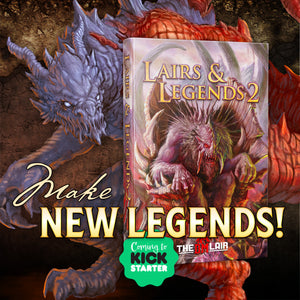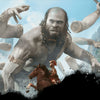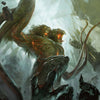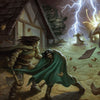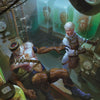8 Things Pro Dungeon Masters Do That You Shouldn’t
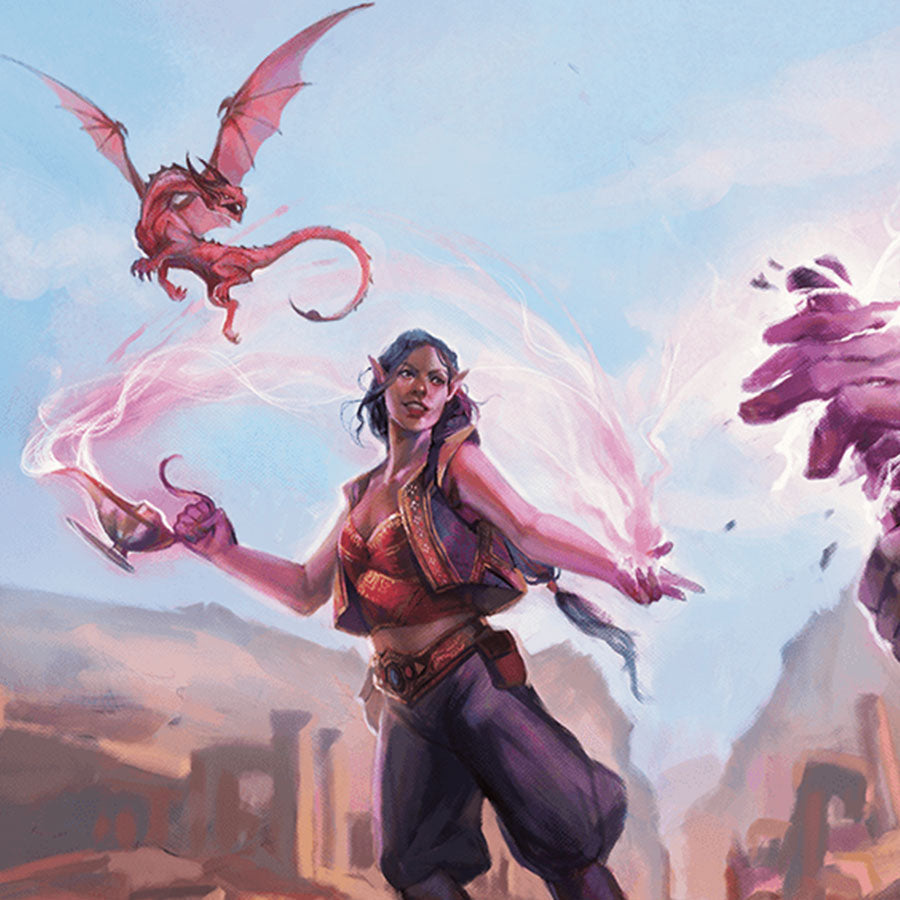
Written by Luke Hart
Watching professional dungeon masters run incredible, high-energy games can be inspiring, but trying to copy everything they do in your own home game is a mistake. Pro DMs are running a show—they have an audience to entertain, and their style is tailored for performance, pacing, and drama. They carefully structure their games with this in mind, often with heavy pre-planning, rehearsed dialogue, and a cast of players who are also performers. But your home game isn’t a production; it’s a casual gathering of friends playing for fun, where pacing, player engagement, and enjoyment matter more than dramatic storytelling or cinematic perfection.
Trying to run your game like a professional DM can lead to burnout, frustration, and unrealistic expectations—both for yourself and your players. Not everything that works on a streamed or recorded game translates well to a casual game night. Some techniques can slow down the game, alienate players, or even make the experience less enjoyable. With that in mind, here are nine things pro DMs do that you probably shouldn’t try in your own D&D game.
By the way, are you a NEW GAME MASTER feeling a bit overwhelmed by everything involved with running a role-playing game? If so, the Secret Art of Game Mastery can help. Get over 100 years of GM experience distilled into practical, easy-to-read advice.
Watch or listen to this article by clicking the video below.
#1 Long monologues; long narrative descriptions; and long cutscenes
Long character monologues, go in here too.
These things work for D&D shows. They work when everyone is cooperating for the sake of the production. The players will sit there patiently and listen to the DM doing the NPC monologue or the LONG beautiful narrative description that just goes on and on, describing every beautiful, wonderful blade of grass. However, your players in your D&D game absolutely won’t – AND THEY SHOULDN’T HAVE TO.
Your players showed up to play a game. They probably want to play a game, not listen to you talk for minutes on end – nor listen to each other talk for long periods of time. Keep NPC monologues short – or better yet, turn them into DIALOGUES so that the players can participate – and keep narrative descriptions short and sweet. KEEP IT SHORT; WITH MORE INFORMATION AVAILABLE ON REQUEST if your players ask about something
#2 Focusing too much on the talky talky
D&D shows feature a lot of social interactions. NPCs talking with PCs. PCs talking with each other. Tons and tons of talky talky.
Now that makes for a really awesome and entertaining D&D show, but it may not work well in your D&D game. Chances are that your players have a MIXTURE of gaming preferences. That is, they might also enjoy things like – oh I don’t know – COMBAT and EXPLORTATION – you know, those other two pillars of the game. So, I recommend balancing your game among the three pillars (combat, exploration, and social interaction), and trying to include some of each in every game session when possible.
D&D shows don’t necessarily do this because player enjoyment is not their primary concern. They are maximizing for AUDIENCE enjoyment. And chances are that your home D&D game doesn’t have an audience! Or if you are streaming it to Twitch, there are like 5 people watching, so you should probably worry less about the audience and more about your players.
#3 Not introducing players’ characters until it’s the perfect moment for the story
Some professional dungeon masters—especially those running heavily scripted or narrative-driven games—love to hold off on introducing a new player’s character until just the right moment. They’ll wait for the stars to align, for the perfect scene, for the story to reach a cinematic peak where the character’s entrance will have maximum impact. And while this might sound cool in theory, in reality, it can be a frustrating disaster.
Let me tell you a story. I once knew a player who had to sit out for three entire game sessions—waiting, waiting, and then waiting some more—because the DM insisted their introduction had to happen at the perfect moment. This poor soul literally sat in his car outside the game store for hours each week, hoping that tonight would finally be the night he got to play. Spoiler alert: he quit before it ever happened.
This is what happens when you prioritize your idea of a dramatic story moment over actually letting your players play the game. Sure, a flashy, well-timed introduction is nice, but at the end of the day, D&D is about player participation. If someone is sitting at your table waiting to play, your job is to get them into the game as soon as possible.
#3 Three hour fights
Another thing you sometimes see in D&D shows are these massive crazy long battles that last for hours. This might be an attempt to balance all the social interactions (talky talky), or perhaps the show is just looking to have long dramatic battle that will keep the audience on the edges of their seats. Now, while this may work on a show, it might not work for you, especially if you plan it that way.
Now, sometimes D&D battles do go on for a long time. Sometimes even hours. It happens. I’ve had it happen in my games many times. But I don’t PLAN for that. I might think a boss battle will be a long one; and it just might be. But my intention isn’t to make it long. The goal is always just to make it FUN and sometimes challenging, if that’s what I’m going for in that particular battle.
While pro DMs might plan their game sessions for long periods of social interactions and then in the next session have a massive battle, this is often NOT good pacing for a D&D game. Combat is a high intensity affair in most games and can be exhausting. Players need moments of low intensity gameplay, which is social interaction and exploration. This is why for PACING considerations, it’s better to alternate among the three pillars during a game session.
Shows might be trying to have long dramatic battles; in actual games they can be exhausting and poorly paced.
#4 Putting the story before the game
This is something you see in D&D shows all the time. And for good reason. The audience is there not only to see the performance of the DM and players – who might be professional actors – but they are also there to see an amazing story unfold.
For instance, you might see this in a D&D show: out of nowhere an NPC shows up, uses power word kill on a players’ character, the character is DEAD, and the player is like, okay cool with it. And then later something happens where that PC is resurrected and comes back in an amazing way. And an awesome story results. So you try this in your own game…and the player is absolutely pissed when their character gets killed with no chance to survive and the game implodes. So, you ask yourself: Why didn’t this work?
You’re forgetting that on D&D shows that the DM and players can plan and conspire about things like this, all for the sake of the story they want to tell for the audience.
It may or may not be scripted. I don’t know. I’m not privy to that information. But I can tell you that D&D shows prioritize the story that the audience will experience far above the fun of playing the game. Again, their primary goal is to run a successful show where the audience is entertained and comes back for more. On the other hand, when YOU run a D&D game for YOUR players, your primary goal is to run a successful GAME where you and your PLAYERS are entertained and come back for more. So, you can’t just focus on story above all else. You must balance the story with the fact that everyone showed up to play a game and that they want to have fun playing that game.
Okay, Luke, you might say, “Should I just conspire with my players and plan things that will happen?” To which I respond, “NOOOOO!!!” Unless of course you want to ruin the game experience – just take away all mystery and suspense. Actions and decisions and dice results during the game wouldn’t matter anymore because you’ve already planned out what’s going to happen. And at that point, one might wonder if there’s even a point to playing the game if you’ve already planned out what will happen.
Now, even if on D&D shows the DM and players are not conspiring and planning certain things – and I’m sure they do at times – the player at least KNOWS that the DM has something cool in mind, so they just roll with it. Now, you could try to count on this at your game table, but even then players might still blow up over things like that they feel aren’t fair or deserved.
Also don’t forget that the players and DM on those shows know they are on a show, often live, and thus are going to keep their cool even if they don’t like something.
#5 Temporary characters that are planned to be killed off
This works really well if the cast members are planning out a really cool story they want to unfold. It works less well if you’re playing a game. Why? Well, you have the DM and one player who are metagaming and planning to get the character killed. However, everyone else at the game doesn’t know it is the plan, so they are fighting hard to keep the character alive. Do you see how this might be frustrating? Can you see how this might ruffle some feathers if the other players find out later that the DM and one player were planning it all out?
Again, what works on a show doesn’t always work in a real D&D game. This is yet another example of prioritizing the story over the game.
#6 Allowing PVP or high-tension moments between characters
Audiences love seeing conflict and tension between protagonists. It’s a classic feature of most movies and TV shows. So, if you’re running a D&D show, it a good idea to include some of this. The audience will eat it up.
However, it’s also a great way to ruin your D&D game. Why? Because PVP – player versus player – has a 90% chance of either ruining your D&D game or at the very least getting players pissed off at each other. It just does, and thousands of experienced game masters can attest to this. It doesn’t always happen, and it is possible to have super mature groups where it rarely happens. However, it usually does. There is a very good reason that I don’t allow PVP in my games, and I recommend that you don’t either.
#7 Letting players and/or characters talk endlessly
One of the biggest mistakes a DM can make is letting a couple of players dominate the game with endless conversation—whether it’s in-character roleplay or out-of-character tangents. While roleplaying is important, if two players are debating a plan for twenty minutes or monologuing their backstory while the rest of the group sits in silence, the game grinds to a halt. This isn’t a high-production D&D show where extended dialogue is entertaining; at a home table, it just leaves other players frustrated and disengaged.
As the DM, it’s your job to pace the game and make sure everyone gets a chance to participate. If a conversation is dragging, step in—cut to an NPC’s response, introduce a new event, or simply say, “Okay, let’s decide and move on.” You don’t have to shut players down, but you do need to keep the momentum going so everyone stays engaged.
#8 Setting your expectations too high
One of the fastest ways to burn out as a Dungeon Master is by setting your expectations too high—both for yourself and for your players. Expecting every player to show up for every session, waiting for cheers after every dramatic moment, or holding yourself to the same standard as professional DMs you watch online is a recipe for disappointment. Life happens. Players have jobs, families, and responsibilities, and sometimes they’ll be tired, distracted, or absent. And that’s okay. If you expect your game to run like a scripted, polished production, you’ll find yourself frustrated when reality doesn’t match your vision.
Instead of trying to recreate the high-energy spectacle of a streamed game, focus on what actually matters: having a fun, engaging session with the people at your table. Your game doesn’t need Oscar-worthy performances or perfectly paced story arcs—it just needs moments where everyone is enjoying themselves. If your players are laughing, invested in their characters, and excited to come back next session, then you’re already running a great game.
100 Years of GM Experience at Your Fingertips!
Are you a NEW GAME MASTER feeling a bit overwhelmed by everything involved with running a role-playing game? Are you a VETERAN GAME MASTER looking for new tips and tricks to take your games to the next level? Look no further than the Secret Art of Game Mastery.
We at the DM Lair have distilled our CENTURY of accumulated GM experience into an easy-to-read guide of practical advice that you can immediately apply to your games! We've even included our own templates–the things that we use to prepare our ACTUAL games.
Get all three books to master your game:
- The Secret Art of Game Mastery. Contains over 100 years of GM advice distilled into an easy-to-read format. It introduces and explains the tools of the trade, scheduling, playstyle, post-game notes, getting player feedback, and more.
- The Secret Art of Preparation. Brings to your fingertips the actual templates and guides that the DM Lair team uses to prepare games, Lair Magazine, and more. Designed as a three-ring binder, it's intended for you to write directly into for your entire campaign!
- The Secret Art of Notetaking. Gives you the keys to tracking your campaign from session to session just like the DM Lair team. Designed as a three-ring binder, it's intended for you to write in and keep track of your whole campaign!
With so much knowledge and experience on its pages, The Secret Art of Game Mastery is guaranteed to become an indispensable tool for all game masters, new and veteran alike. And if that isn’t enough, the information applies to all game systems and all genres!
-
Posted in
Game Master How-To Articles


